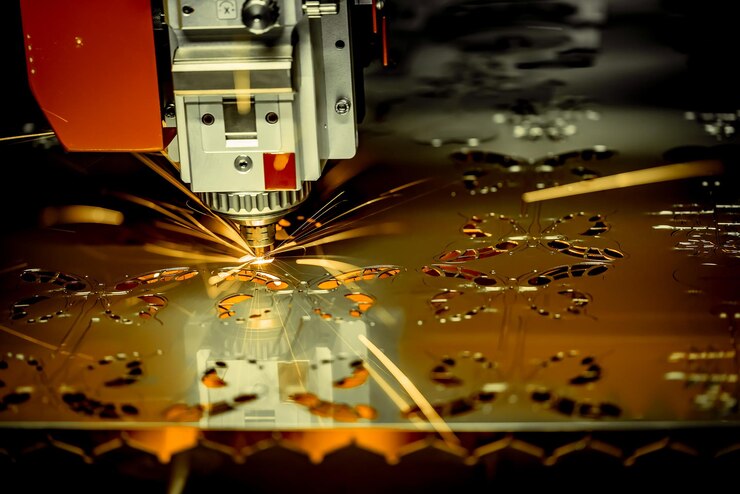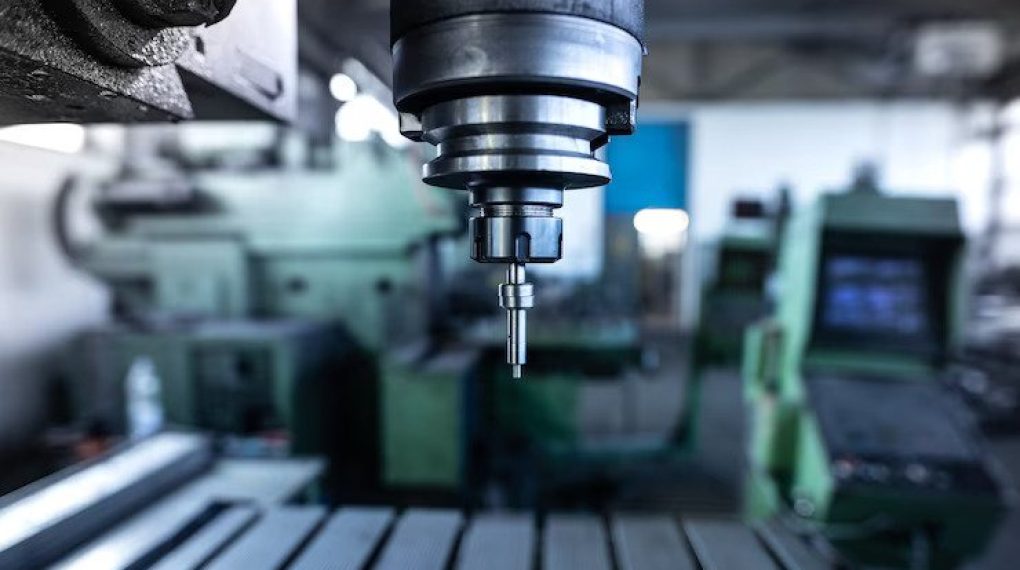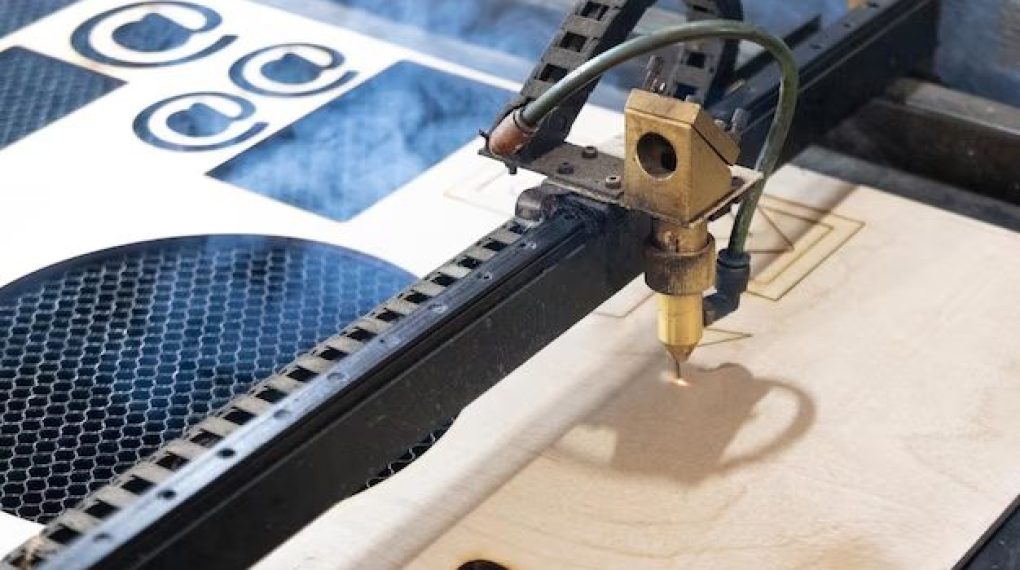
Laser processing technology uses a laser beam to cut, shape, or etch materials precisely. There are many sectors that have been a part of the laser manufacturing industries for decades.
In recent years, however, advancements have led to new applications and impacts on manufacturing processes. That’s why the global laser processing industry is expected to increase at a CAGR of 7.89% to reach $44.09 billion by 2032.
What Is Laser Processing Technology?
Laser processing is a process that uses laser energy to apply heat to materials. It’s a type of thermal processing, which means it uses heat as its main energy source. Laser energy is focused and concentrated through a beam steering laser that can be precisely controlled through computer-controlled optics systems.
Laser processing can be used for laser material processing, cutting, welding, marking, and removal or addition applications. It is used in many industries, including aerospace/defense, automotive, biomedical devices, electronics & semiconductors, industrial manufacturing, medical device manufacturing, and oil & gas exploration industries.
You can select from different laser processing solutions based on your industry. Do some research to find the right fit for your requirements. This is important because the better the fit, the lower the chances of failure.
Advancements in Laser Processing Technology

Laser processing is a technology that has been around for decades but has become increasingly advanced in recent years. In fact, laser processing technology can be found in many industries today. The reason for this widespread adoption is simple. Laser processing offers numerous benefits over traditional manufacturing techniques and other techniques, such as electron beam welding (EBW).
Laser-based machining processes are often used when high precision or complex geometry is required because they offer excellent dimensional control with minimal distortion. Laser cutting produces clean edges on parts that are difficult to achieve using other technologies like mechanical milling and EDM (electrical discharge machining).
Additionally, lasers can be programmed to repeat cuts at any angle, which makes them ideal for cutting intricate shapes out of flat sheets of material such as glass or metal panels on car bodies or electronic devices like smartphones.
Applications of Laser Processing
Laser processing is used to manufacture parts, products, and devices. It can be used for various applications, including aerospace, medical devices, and automotive parts. You can learn about different applications from a company’s website offering laser processing services. While there are many other sites to get information, taking it from the websites of laser processing companies will ensure that the content comes from experts.
For example, you can find the list of laser processing applications on the website of Novanta Photonics, a photonic solution company. It has listed the applications under different categories, such as material processing, digital converting, marking & coding, medical, etc. You can also find a list of industries using laser processing solutions on the website.
Applications in Manufacturing

Laser processing has become popular for creating intricate patterns, letters, and logos on products. The process can create unique designs, logos, and product artwork.
There are many other use cases of laser processing, and some of these industries include the following:
1. Aerospace
Laser processing has been used in the aerospace industry since the 1960s. Lasers are used for cutting and forming composite materials, such as carbon fiber, fiberglass, and Kevlar. They can also weld metal parts together without heat-affected zones (HAZ). The US has around 52.1% of space tech companies and is one of the largest markets for the same technology.
In addition, they can solder thin-film microelectronic devices onto sensitive surfaces such as silicon wafers or silicon dioxide substrates without damaging them. This can save time during production because there’s no need for manual assembly after lapping or grinding processes have been completed before bonding processes take place.
It also reduces costs because fewer machines are needed overall at each stage of production due to their high degree of automation throughout various stages of fabrication. If you look closely at modern factories where almost everything seems automated, you’ll notice this trend.
2. Automotive
Laser processing is used to manufacture parts for cars. It can make car parts lighter, stronger, and more durable. This can also be done using a laser to add stronger materials like carbon fiber into plastic or metal components.
Adding these stronger components makes them lighter while maintaining their strength and durability. Automobile giants like GM, Honda, BMW, Audi, and Polestar have agreements with carbon fiber material producers, leading to greater functionality and enhanced performance.
Laser processing can also improve fuel efficiency by reducing friction between engine moving parts. This will reduce energy loss from wasted heat generated during friction between parts like gears and bearings that rub against each other when they move back and forth along their axes.
This means less energy needs to be expended for the engine’s pistons to turn at high speeds when accelerating from a stop sign or traffic light, which means less fuel is needed per mile driven.
3. Medical Devices
Laser processing has been used to create surgical instruments, such as drills that cut bone tissue during surgery. These instruments are essential when performing hip replacement surgeries where doctors need to remove damaged bone tissue from around the hip joint so they can replace it with new artificial components.
Hip joint replacements are one of the most common applications of laser processing. According to an annual report by the American Academy of Orthopaedic Surgeons, at least 2.2 million hip and knee replacement surgeries were reported in the US alone in 2021.
Impact of Laser Processing Technology
Laser processing technology is relatively new but has already made significant strides in industrial applications. This versatility and cost-effectiveness are two of the many reasons why laser processing has become so popular. It is also safe, environmentally friendly, and efficient.
In addition to its many benefits as an alternative method of manufacturing metal parts, laser processing can be used on other materials such as glass, wood, or plastic, making it possible for businesses across industries to benefit from this advanced manufacturing method.
Conclusion
We hope this article has given you a better understanding of laser processing and how it can be used in various industries. Laser processing is a fast-growing technology with many applications in the medical, aerospace, and automotive industries. It is expected to continue to grow in the future as more companies adopt this method of manufacturing.
Read Also:






